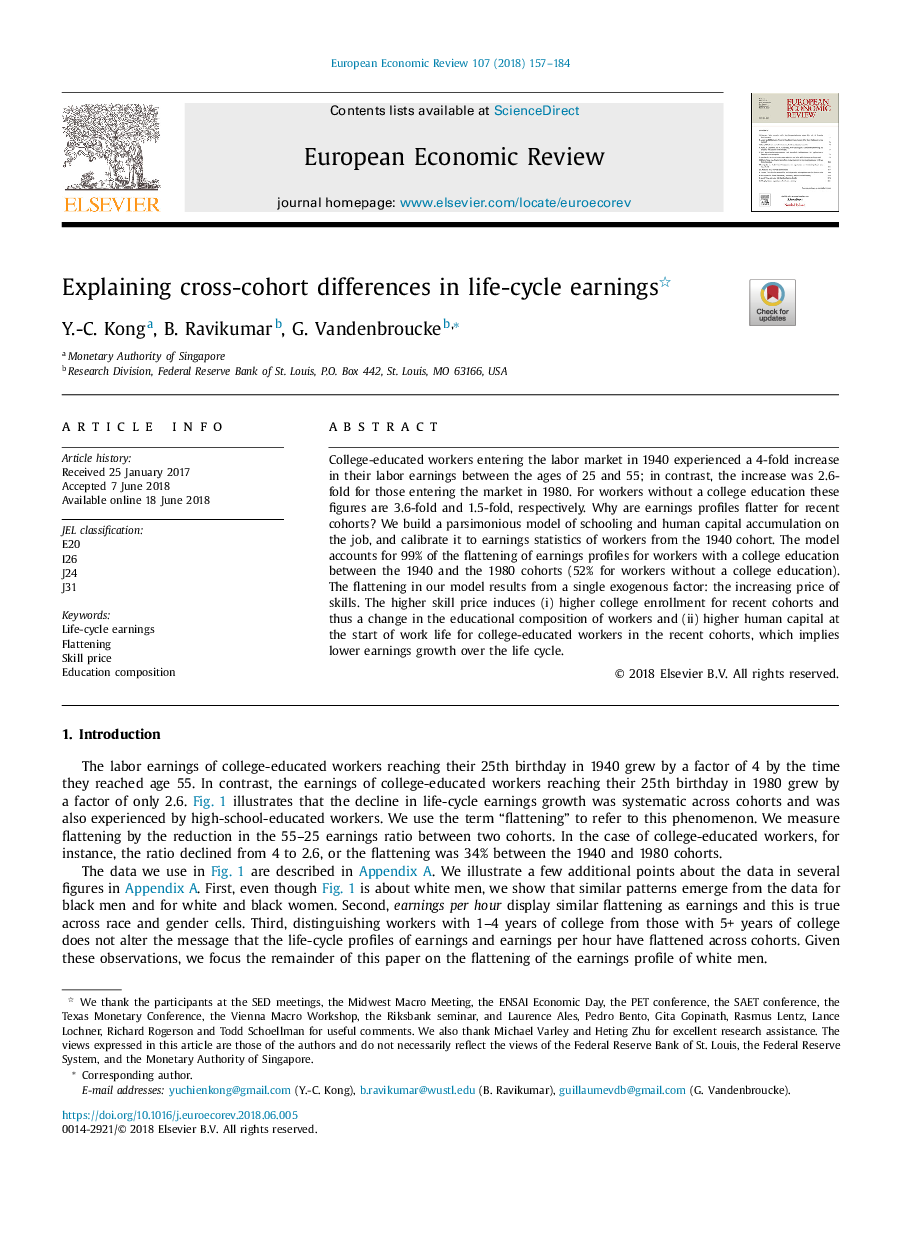| کد مقاله | کد نشریه | سال انتشار | مقاله انگلیسی | نسخه تمام متن |
|---|---|---|---|---|
| 7351388 | 1476761 | 2018 | 28 صفحه PDF | دانلود رایگان |
عنوان انگلیسی مقاله ISI
Explaining cross-cohort differences in life-cycle earnings
ترجمه فارسی عنوان
توضیح تفاوت های متقابل کوهورت در درآمد چرخه زندگی
دانلود مقاله + سفارش ترجمه
دانلود مقاله ISI انگلیسی
رایگان برای ایرانیان
کلمات کلیدی
موضوعات مرتبط
علوم انسانی و اجتماعی
اقتصاد، اقتصادسنجی و امور مالی
اقتصاد و اقتصادسنجی
چکیده انگلیسی
College-educated workers entering the labor market in 1940 experienced a 4-fold increase in their labor earnings between the ages of 25 and 55; in contrast, the increase was 2.6-fold for those entering the market in 1980. For workers without a college education these figures are 3.6-fold and 1.5-fold, respectively. Why are earnings profiles flatter for recent cohorts? We build a parsimonious model of schooling and human capital accumulation on the job, and calibrate it to earnings statistics of workers from the 1940 cohort. The model accounts for 99% of the flattening of earnings profiles for workers with a college education between the 1940 and the 1980 cohorts (52% for workers without a college education). The flattening in our model results from a single exogenous factor: the increasing price of skills. The higher skill price induces (i) higher college enrollment for recent cohorts and thus a change in the educational composition of workers and (ii) higher human capital at the start of work life for college-educated workers in the recent cohorts, which implies lower earnings growth over the life cycle.
ناشر
Database: Elsevier - ScienceDirect (ساینس دایرکت)
Journal: European Economic Review - Volume 107, August 2018, Pages 157-184
Journal: European Economic Review - Volume 107, August 2018, Pages 157-184
نویسندگان
Y.-C. Kong, B. Ravikumar, G. Vandenbroucke,
